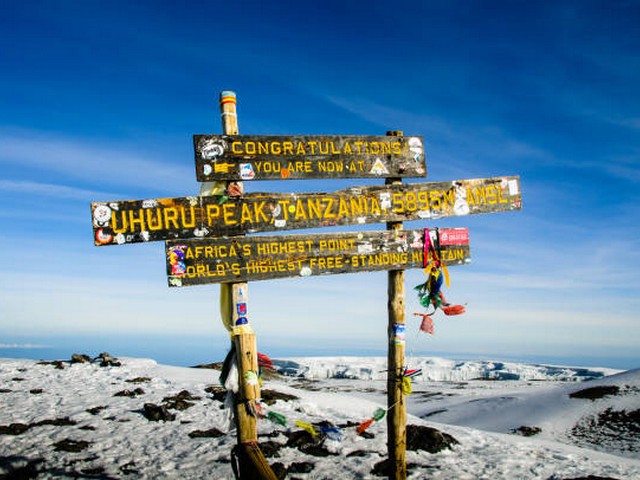Kilimanjaro Eco-tourism And Forest Conservation: A Pathway to Sustainable Adventure
Perched majestically above the African plains, Mount Kilimanjaro stands not only as a beacon for intrepid climbers but also as a resounding testament to the beauty and fragility of our natural world. At the Kilimanjaro Centre for Trekking and Ecotourism (KCTE), we intertwine the thrill of adventure with the earnest responsibility of conservation. This blog post explores the vital role that eco-tourism plays in the sustainability and conservation of Kilimanjaro’s unique forest ecosystem, urging every traveler to become an ally in this noble cause.
The Heartbeat of Kilimanjaro: Understanding Its Ecosystem
Mount Kilimanjaro is more than just the highest peak in Africa; it is a vibrant ecosystem that is home to a rich biodiversity. From lush rainforests at its base to the alpine deserts at its heights, each zone plays a critical role in maintaining the ecological balance. Protecting this habitat is imperative, not only for the flora and fauna that reside there but also for the communities that depend on the mountain for water and livelihood.
Eco-tourism: The Sustainable Choice
Why Choose Eco-tourism?
Eco-tourism on Kilimanjaro goes beyond mere travel; it is about making travel a transformative experience both for the visitor and the visited. By choosing eco-tourism, travelers support practices that minimize environmental impact, contribute to conservation efforts, and respect local culture and heritage. It’s about making every step count towards a greater good.
How KCTE Promotes Eco-friendly Practices
At KCTE, we are committed to upholding the highest standards of eco-tourism. Our operations are designed to ensure minimal environmental impact and enhance the well-being of local communities. Here’s how we make a difference:
- Sustainable Routes and Practices: We promote less frequented routes to reduce trail erosion and allow the more popular paths time to recover.
- Waste Management: We enforce a strict pack-it-in, pack-it-out policy, ensuring that all waste generated during treks is carried off the mountain.
- Energy Conservation: We use solar technologies at our campsites to reduce the need for fossil fuels.
- Water Conservation: Water is precious on the mountain. We educate our climbers on efficient water use and employ water-saving techniques at our camps.
- Supporting Local Communities: A significant part of your fees goes towards local projects and initiatives that empower the communities around Kilimanjaro.
The Impact of Forest Conservation
Preserving Biodiversity
The forests of Kilimanjaro are a sanctuary for wildlife, including elusive species such as the Kilimanjaro tree hyrax and unique flora like the giant groundsel. Conservation efforts help protect these species from the brink of extinction and maintain the balance of the ecosystem.
Sustaining Livelihoods
The communities living in the shadows of Kilimanjaro rely heavily on the forest for resources – water, firewood, and fertile soil for agriculture. By protecting the forest, eco-tourism ensures that these resources remain available, supporting sustainable livelihoods.
Combating Climate Change
Forests are vital carbon sinks. Preserving the forests of Kilimanjaro contributes to the fight against global climate change by capturing carbon dioxide and releasing oxygen. Every tree saved on Kilimanjaro is a win for the global community.
Join the Movement: Climb Kilimanjaro with KCTE
Embarking on a climb with KCTE isn’t just about conquering a mountain; it’s about joining a movement committed to preservation and sustainable travel. When you book your Kilimanjaro adventure with us, you are choosing a path that respects the earth and contributes to a legacy of conservation.
What We Offer
- Guided Eco-Tours: Experience Kilimanjaro with knowledgeable guides who are passionate about conservation.
- Cultural Immersion: Engage with local cultures in a respectful and enriching manner.
- Conservation Activities: Participate in conservation efforts, such as tree planting, during your climb.
FAQs: Kilimanjaro Eco-tourism And Forest Conservation
What Can I Do to Be a Responsible Climber?
Being a responsible climber means adhering to the Leave No Trace principles, conserving resources, respecting wildlife, and supporting eco-friendly tour operators like KCTE.
How Does My Climb Contribute to Conservation?
A portion of your trekking fee is allocated to conservation projects on Kilimanjaro and to community initiatives that promote sustainable development around the mountain.
Can Eco-tourism Really Make a Difference?
Absolutely! Eco-tourism is a powerful tool that promotes environmental awareness, generates revenue for conservation, and fosters respect for different cultures and community benefits.
Conclusion: Your Call to Adventure and Conservation
As you plan your journey to the roof of Africa, choose a path that leads towards sustainability and respect for nature. At the Kilimanjaro Centre for Trekking and Ecotourism, we are ready to guide you on this incredible adventure that not only promises breathtaking views but also a chance to make a positive impact. Book your climb with KCTE today and be a part of preserving Kilimanjaro for generations to come. Let’s walk together, towards a greener, more sustainable future on the slopes of this majestic mountain.
Embrace the challenge, cherish the beauty, and contribute to conservation. Let your trek on Kilimanjaro be a step towards a better planet.




